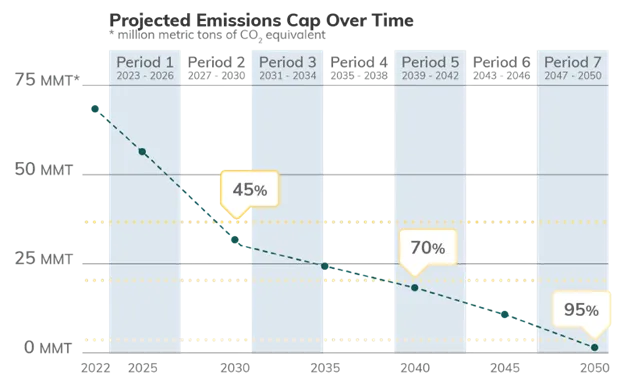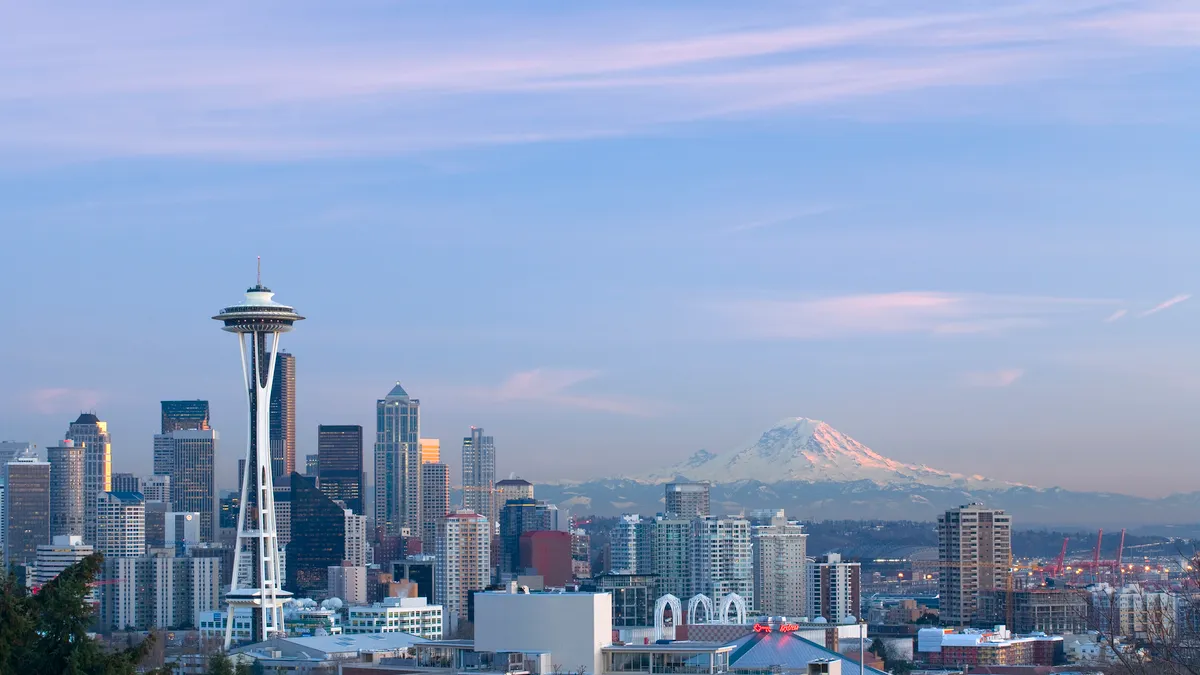Dive Brief:
- Washington’s greenhouse cap-and-trade program regulations were finalized Oct. 1, with its program set to launch Jan. 1. Over time, it will cover 75% of the state’s largest emitters of carbon dioxide, those releasing more than 25,000 metric tons of CO2 equivalent per year. Electric and gas utilities and fuel suppliers will be covered by the program starting next year.
- Although Washington’s program is modeled after California’s emissions trading program, it has put environmental equity center stage, according to climate, energy and environmental justice advocates. Washington’s program also will require air pollution monitoring to ensure air quality improvements, and avoid CO2 equivalent offsets polluting marginalized communities, which advocates say has occurred in California.
- Washington seeks to align its market with California’s and may eventually link the two programs, according to Washington Department of Ecology’s spokesperson Claire Boyte-White. California and Quebec linked their trading programs in 2014 and have been holding joint auctions of allowances.
Dive Insight:
Washington’s Department of Ecology finalized rules for the state’s statutory cap-and-trade program to help slash emissions 45% below 1990 levels by 2030, 70% by 2040 and 95% below 1990 levels by 2050.
“This new program will help us decarbonize our economy, improve air quality, and put Washington at the forefront of the fast-growing global era of clean energy,” Washington Gov. Jay Inslee, D, said in a statement.
“Washington is the new gold standard for cap and trade,” said Kelly Hall, Washington Policy Director at Climate Solutions, during an Oct. 3 press briefing with environmental justice and other clean air organizations. “California went first and Washington had the ability to learn from it and make adjustments so we don’t have the same shortcomings.”
Those in disadvantaged neighborhoods and communities of color, and other marginalized members of society felt they were largely ignored by California, but their concerns have been central to Washington’s cap-and-trade program, said Paula Sardinas, President/CEO at the Washington Build Back Black Alliance and FMS Global Strategies. “Washington is talking the talk and walking the walk,” on environmental equity, she said.

The new state program will include air pollution monitoring to ensure the emissions trading program reduces air pollution and avoids CO2 offsets increasing pollution in overburdened communities by requiring they be counted towards a specific allotment of capped allowances, not in addition to them.
But like California’s cap-and-trade program, Washington also will set an initial ceiling that will drop over time. It too will hold quarterly auctions of allowances, with each allowance representing a metric ton of CO2 equivalent. Allowances will be sold to produce a revenue stream for greenhouse gas reduction projects and incentivize reductions, according to the Department of Ecology.
The scale of investments to be made from the auction revenue over 20-30 years is expected to clean the air, spur economic development and be “really transformational,” Hall said.
Utilities along with some other businesses considered trade-sensitive will receive allowances at no cost, per the direction of the state legislature. But utilities can have the Department of Ecology sell the allowances they got for free, with the revenue generated used for the benefit of their ratepayers, said Boyte-White.
The first auction is scheduled for February 2023.
The program is considered “the cornerstone of a suite of Washington climate policies that aim to increase the number of zero-emission vehicles on the road, accelerate the switch to cleaner transportation fuels, and move away from coal and other polluting sources of electricity,” the Ecology Department stated.














